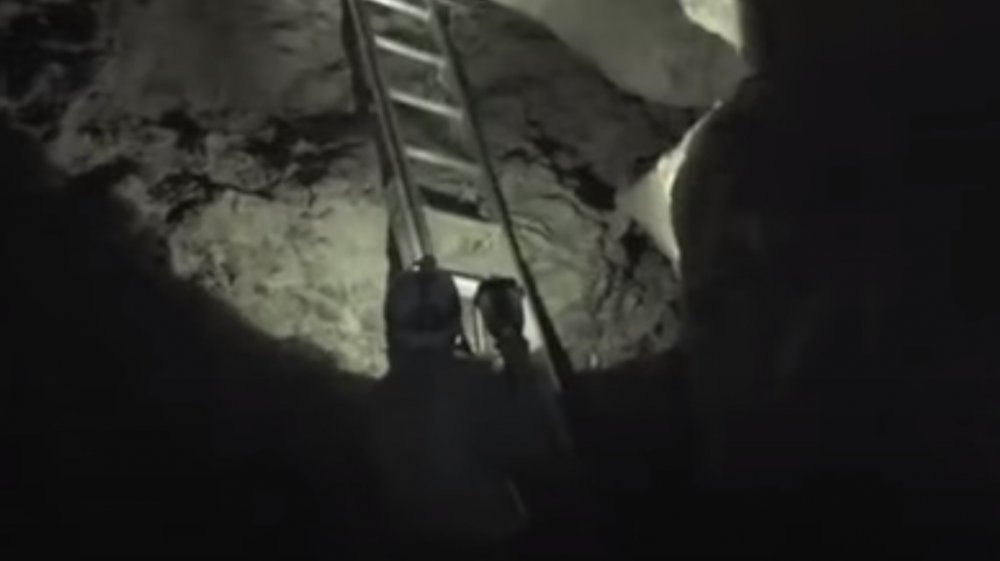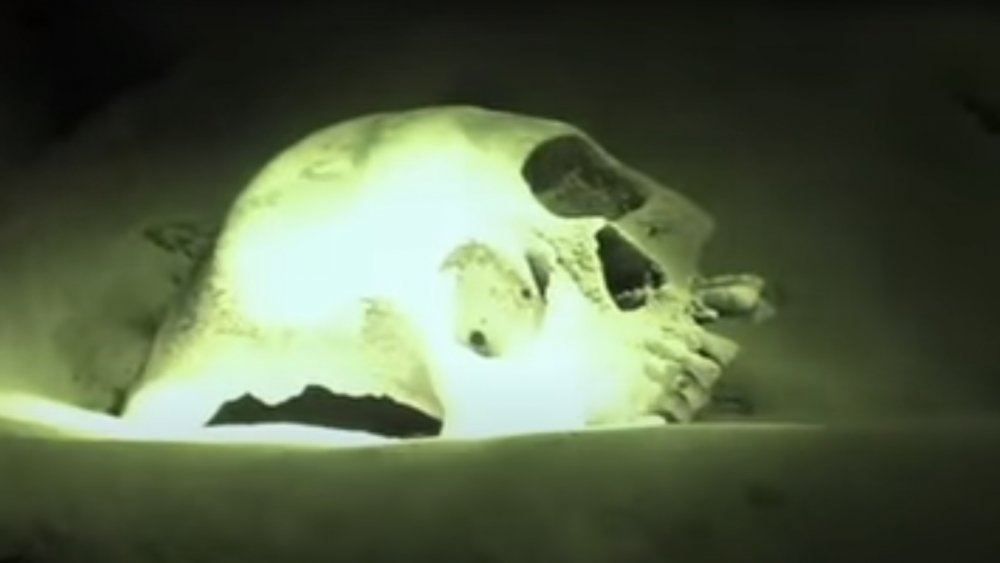The Untold Truth Of The Midnight Terror Cave
Face it. Everybody is tired of being oversold on products and ideas. Everyone had that moment during childhood when they purchased their first Amazing Sea Monkeys kit, expecting to own a colony of sentient new mer-buddies just like the ones in the ad, only to experience heartbreak at the sight of a bunch of paralyzed brine shrimp swimming desperate circles at the bottom of a plastic jar.
So, on the same vein, the name "Midnight Terror Cave" was probably a little dramatic, right? Yes, the labyrinthine system of pitch-black subterranean chaos exists, and yes, according to Science Alert, it was discovered when a would-be thief plummeted 60 feet into the surface of the Earth and screamed and screamed and screamed. But no, it isn't filled with vampiric monsters a la The Descent, or mythical creatures waiting to break free from their underground prison. In reality, it's just a normal, run-of-the-mill cave in Belize ... filled with the bones of hundreds upon hundreds of dead children. Don't be so dramatic.
The Midnight Terror Cave: finding a good babysitter has never been easy
The expedition to the Midnight Terror Cave sounds arduous at best. Anthropologists from Cal State L.A. spent three years in less than ideal circumstances, even before you factor in the remains of hundreds of kids. According to their descriptions of the project, the heat index reached 130º, roads became impassable thanks to the mud, and looters started ransacking the site after it was featured on a Discovery Channel series.
Still, what they documented was amazing. The cave, according to their findings, was a site dedicated to Mayan child sacrifices for around 1,500 years. Beginning around 1000 BCE, kids between the ages of four and fourteen years old were brought to the area and given up, in all likelihood, to the rain god Chaak.
Wait, it gets darker. Chemical analysis of the teeth in the cave pointed to the kids being out-of-towners, gathered from hundreds of miles away. Theories about where they came from are varied and horrifying. Samantha Lorenz, at the time a graduate student working on analysis of the bodies, said to Collectors Weekly, "Were these children taken? Were they sold? Were they voluntarily given up? Were they orphans? There are a lot of different things we need to look into. And because there are so many of them all coming from the same region, then you have to look at whether there was a trade network, essentially a human-trafficking network, in children."

